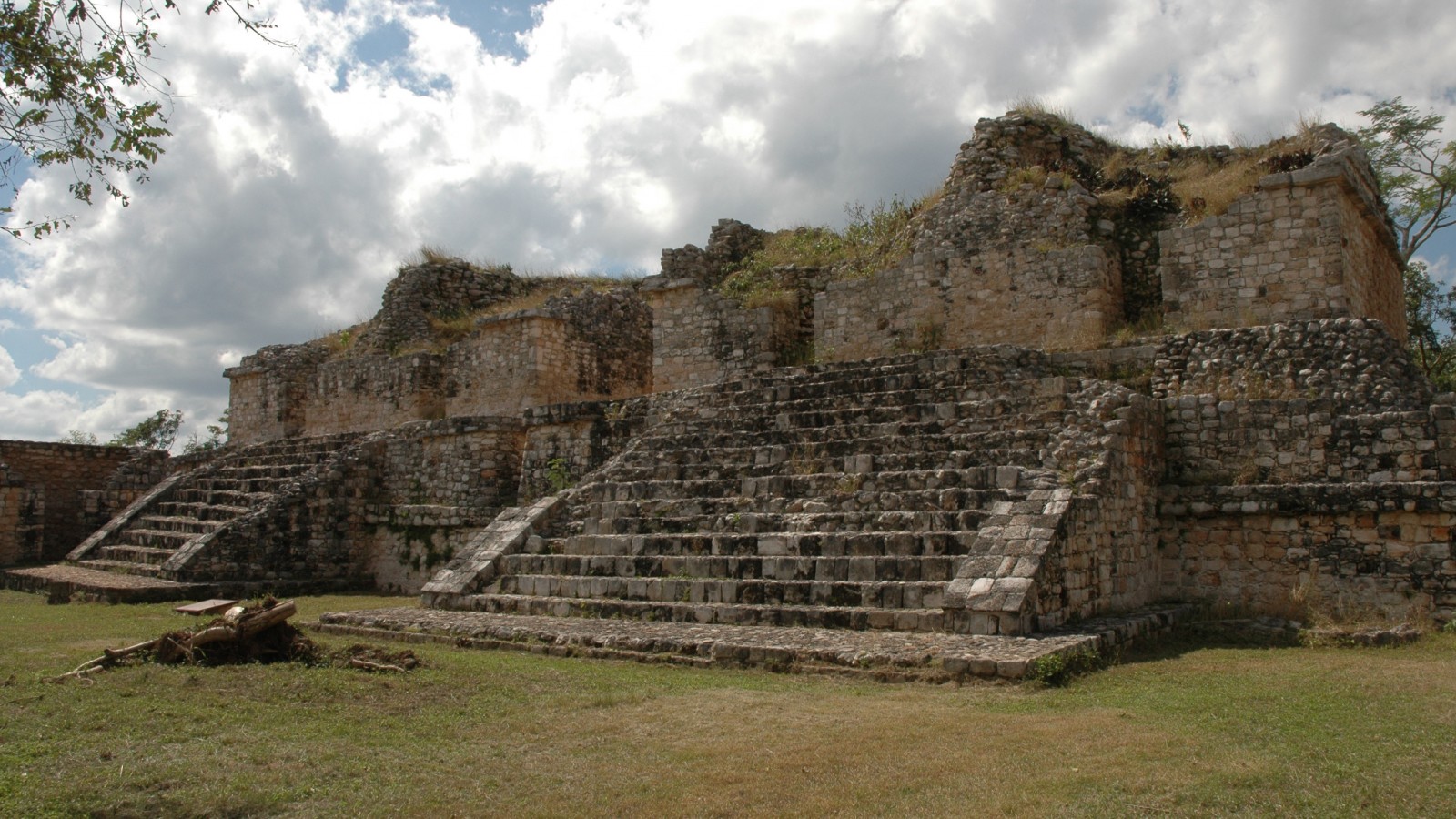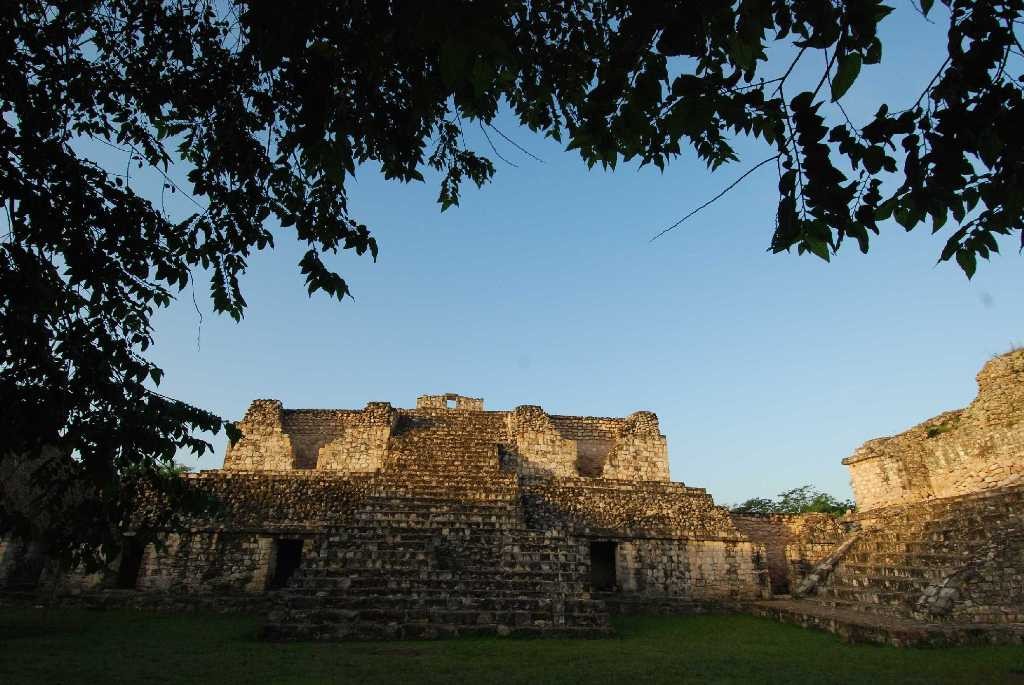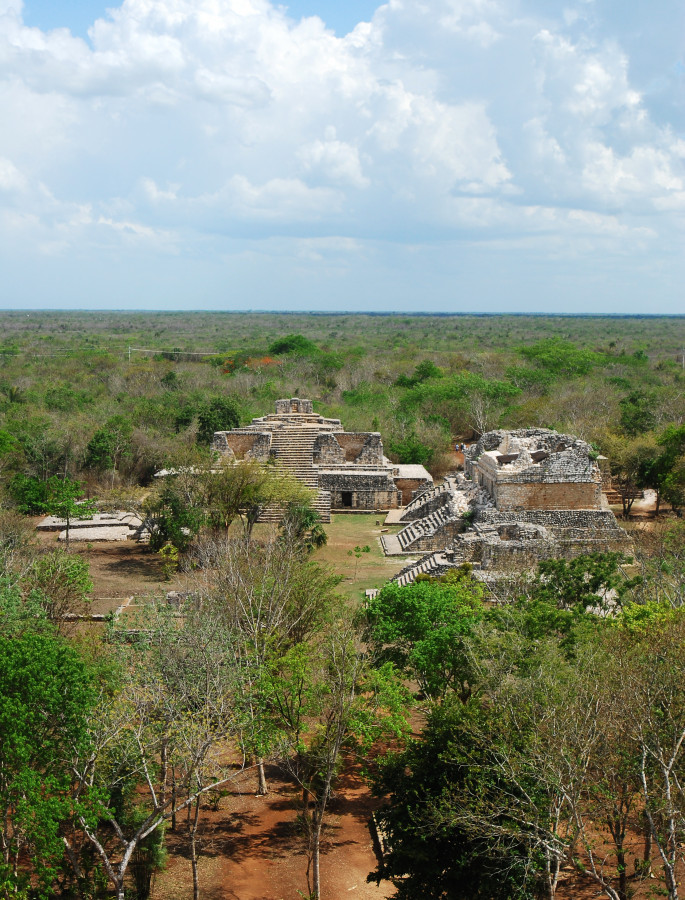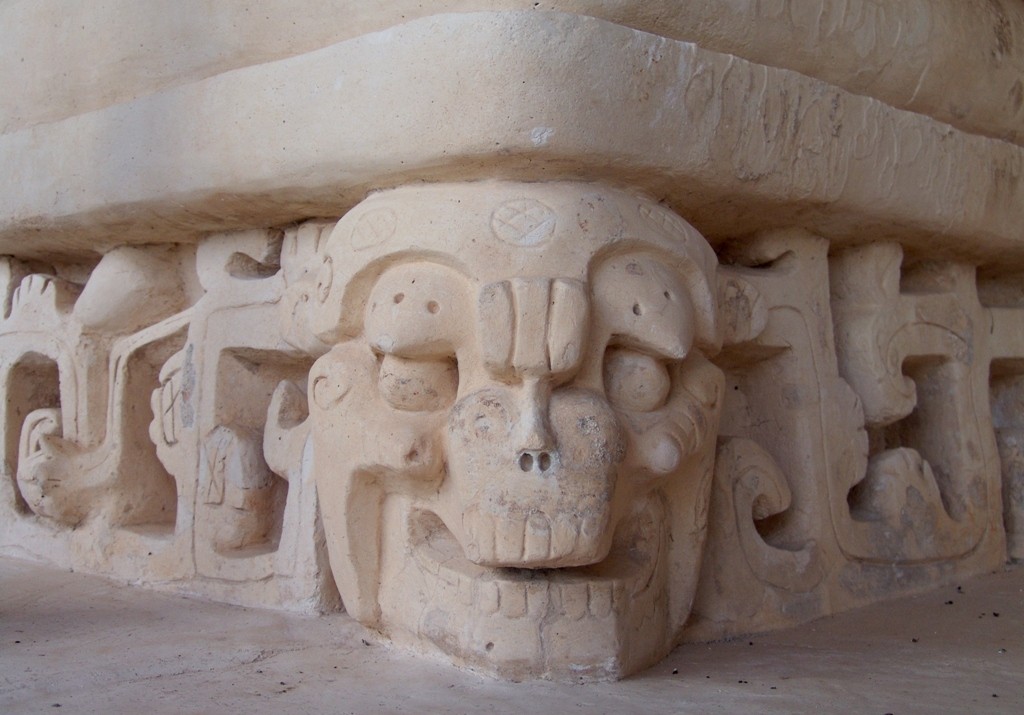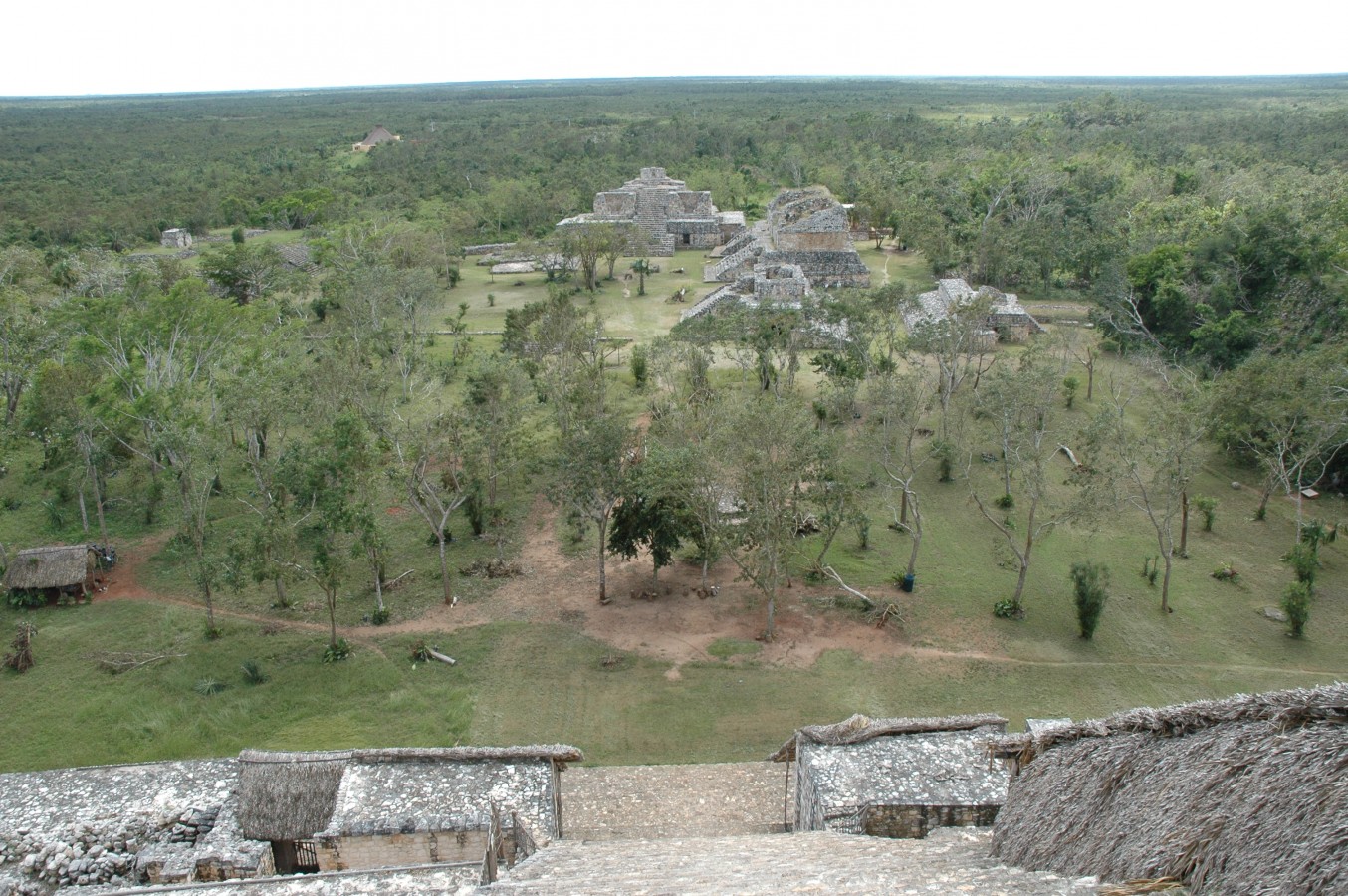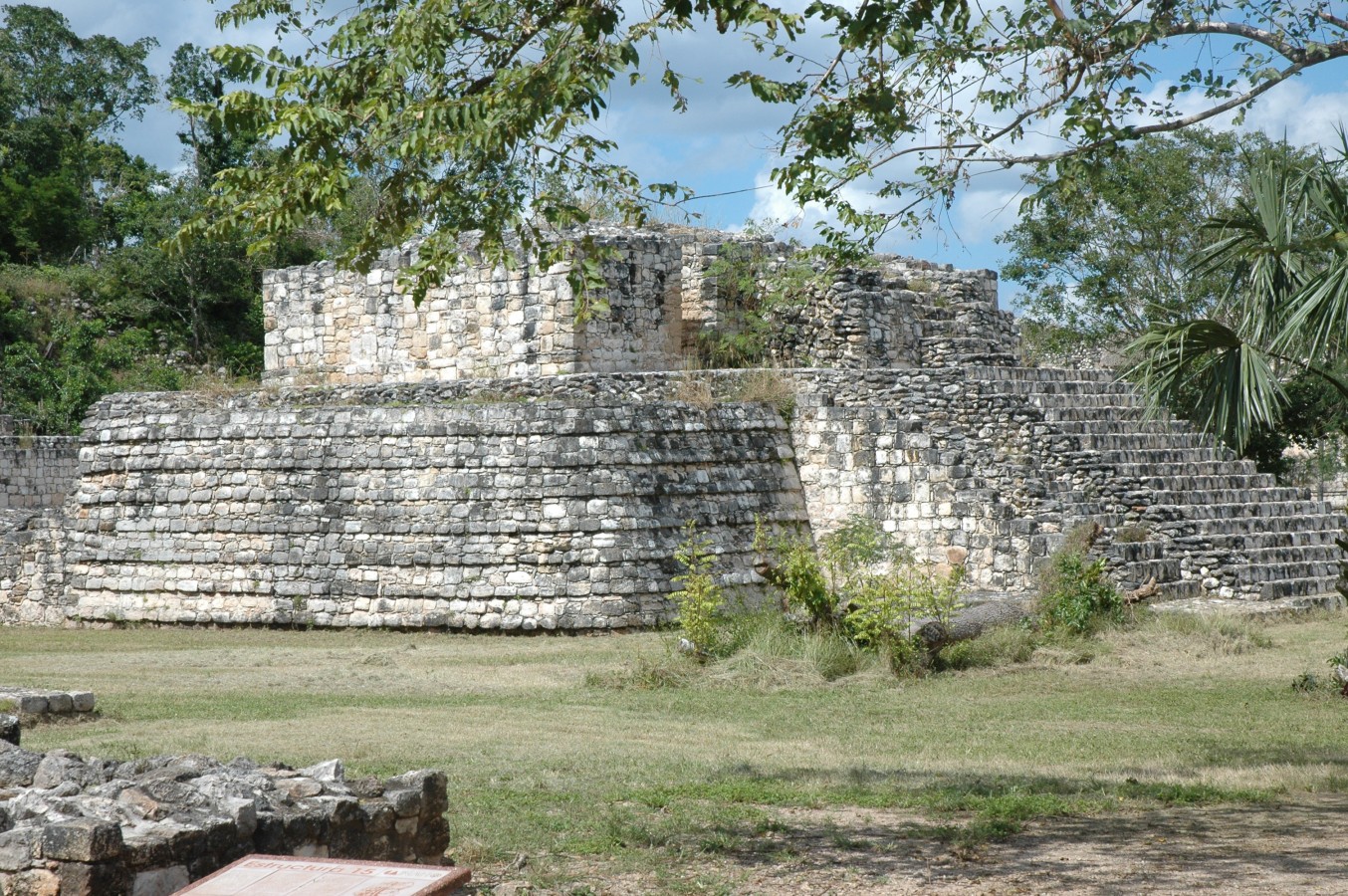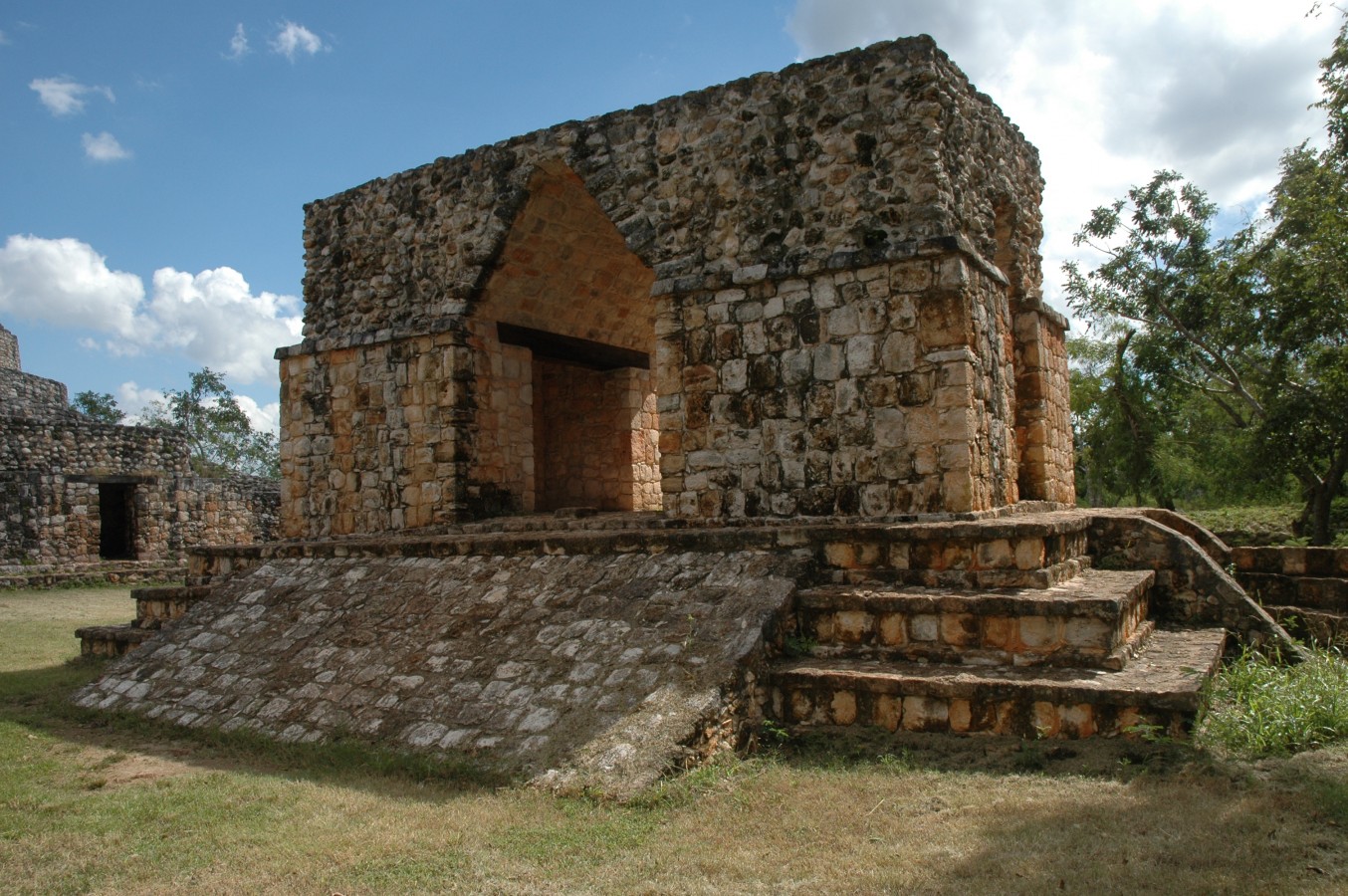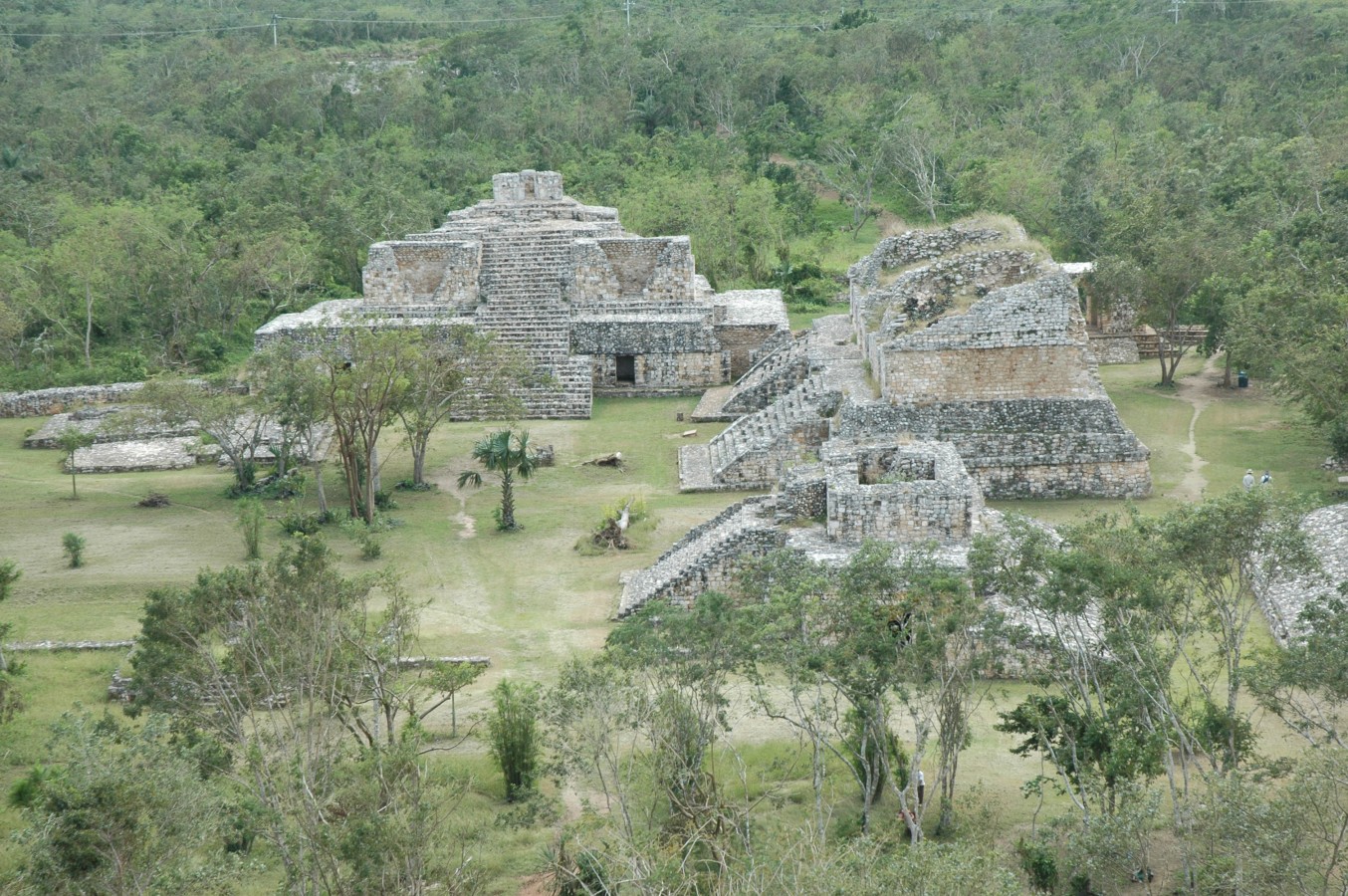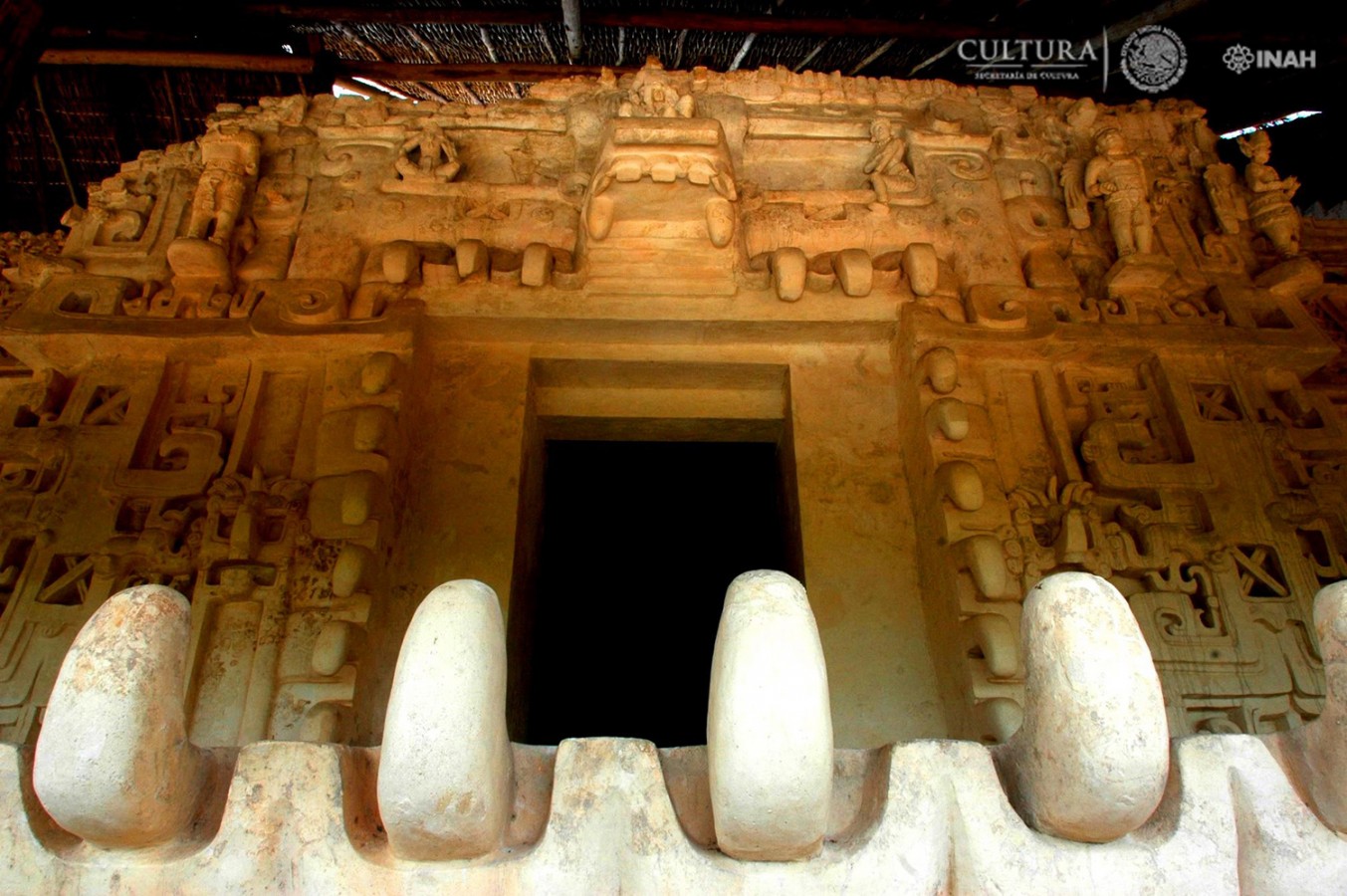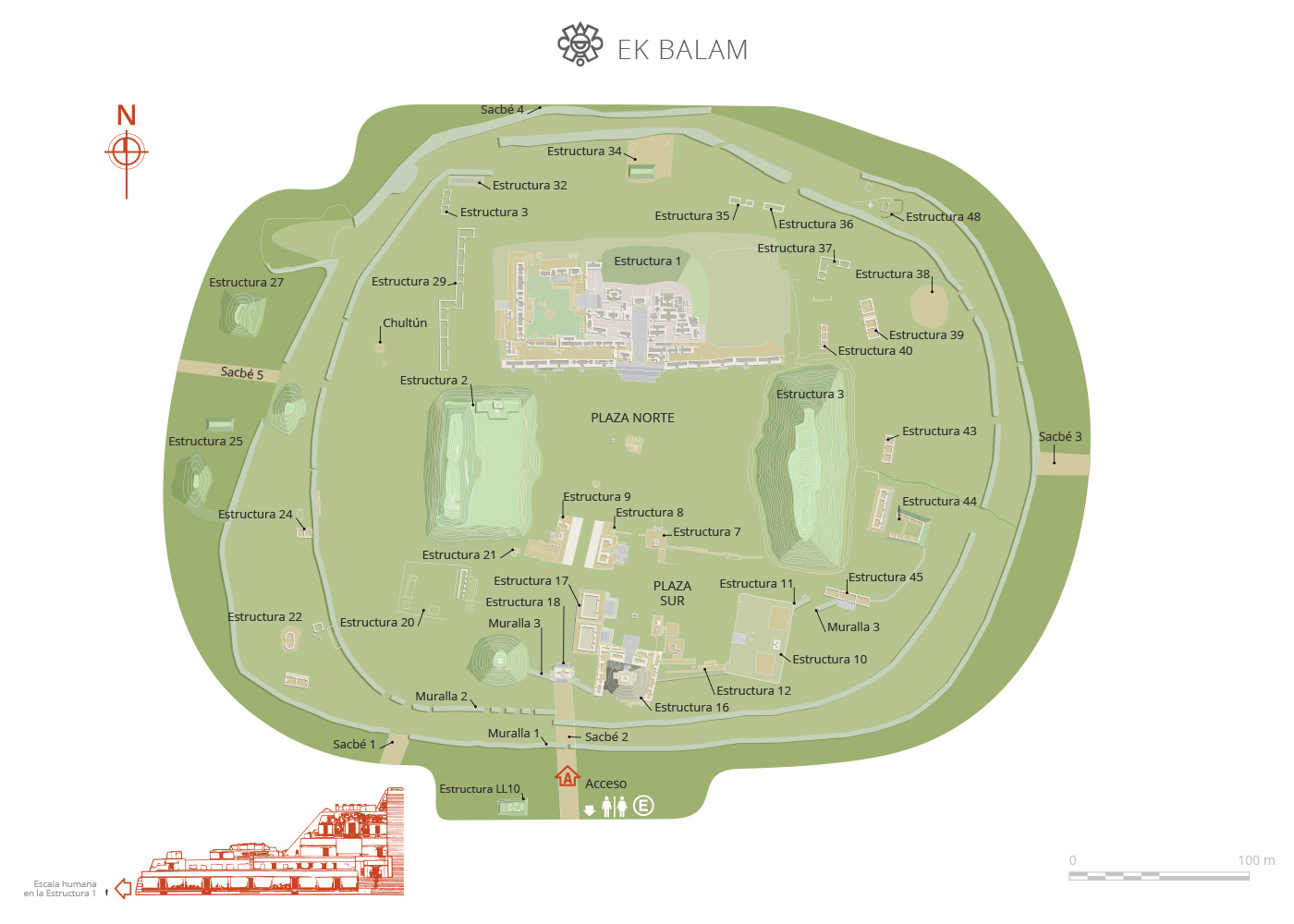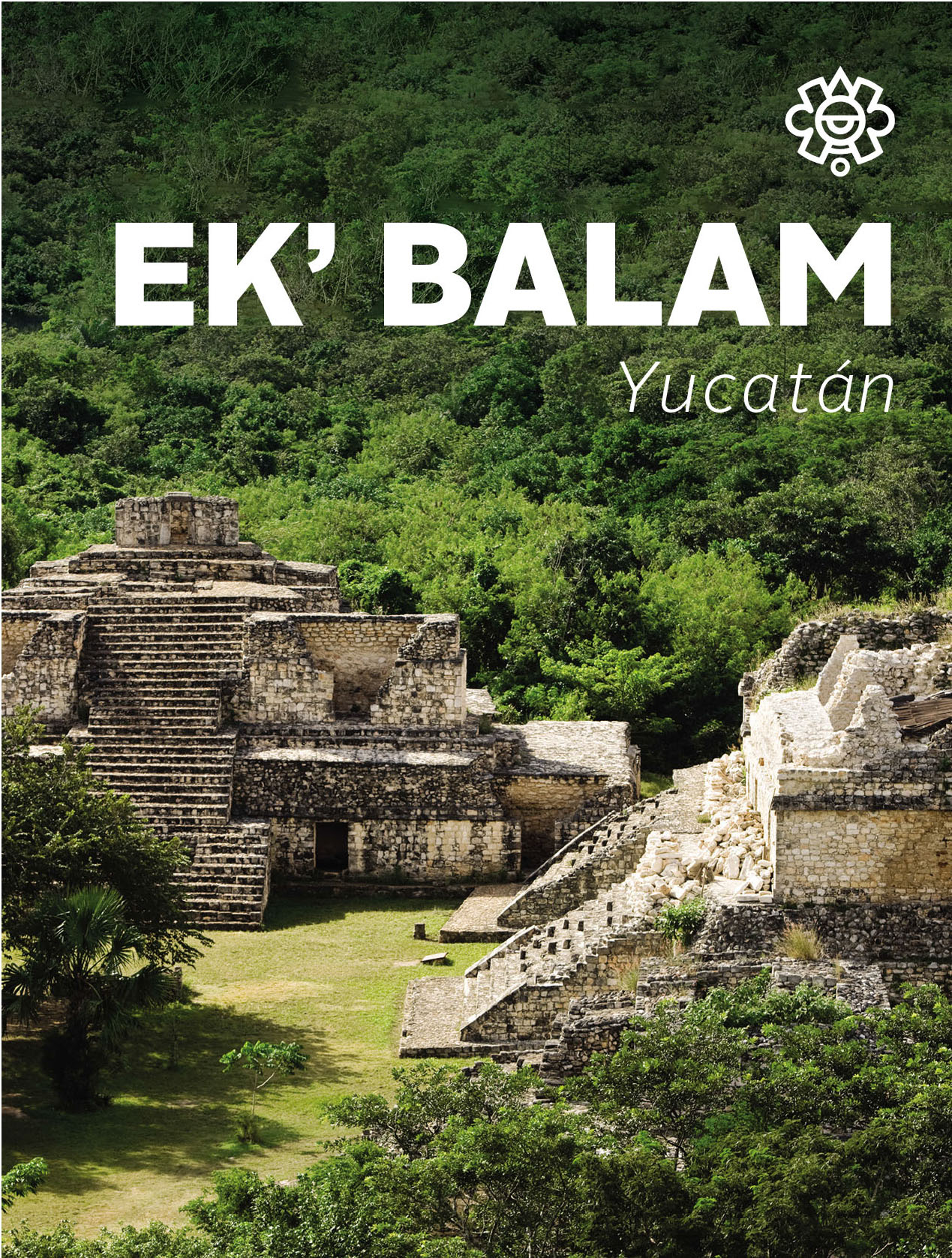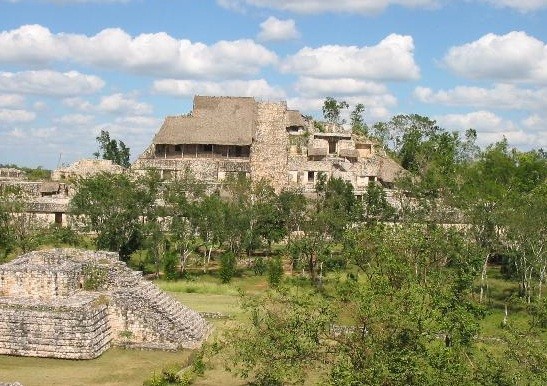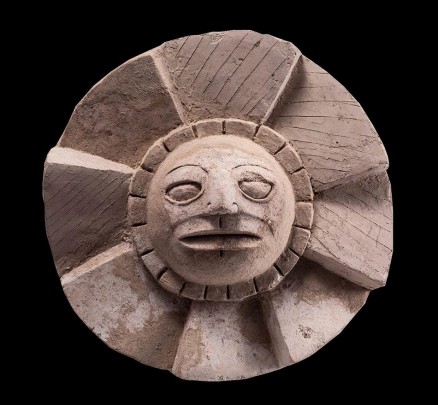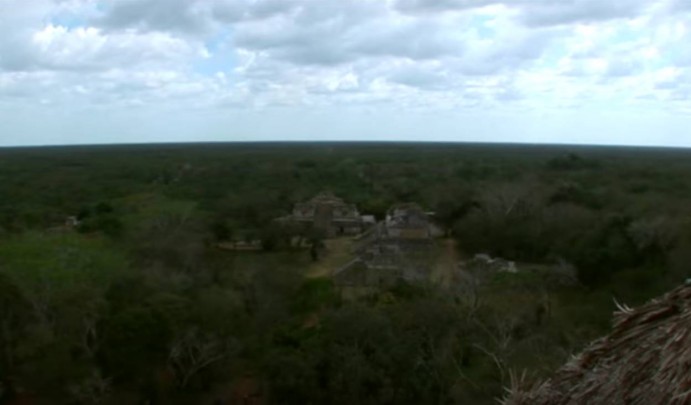Ek' Balam
Bright star jaguar
Ramparts, murals, steles, plazas and sumptuous palaces await the visitor, but the greatest surprise is the richness of the architecture and decoration of its buildings, like the Acropolis, whose entrance looks like the mouth of a monster with enormous fangs.
About the site
Ek’ Balam was established in the Middle Preclassic between 300 BC and 300 AD, and it remained inhabited until the arrival of the Spanish, reaching its peak during the Late Classic from 770 to 896. It covered an extensive area of land and had classic Mayan features. It shared common characteristics with the most outstanding sites, for example it had three murals, five sacbeob (Mayan roads), carved stelae and a ballcourt. The kingdom of Talol became very powerful under king Ukit Kan Lek Tok’, and to a lesser extent under his successors to the throne. The governors and the elite of the city of Ek’ Balam flaunted colossal and magnificent architectural works, sculptures, paintings and luxury objects created on their behalf by the best master architects, sculptors, painter-scribes and all types of craftsmen. The kingdom of Talol was a fiefdom maintained by force of arms, which exploited the labor and resources of the settlements under its dominion, since its own population was not large enough to have built its great works, which included the royal palace known today as the Acropolis, with its singularly massive dimensions, complex architectural layout, and numerous areas recording the story of the king and his successors in paintings and reliefs, on a variety of surfaces. Apart from the artistic value of Ek’ Balam’s features, the historical value of the information found—and which is still being discovered—is vital, since it has filled a big gap in the archeological record for the northeastern part of the peninsula. The kingdom of Talol had a strong influence on neighboring sites, even on Chichen Itza, which in its early stages of development adopted the techniques and materials used at Ek’ Balam for mural paintings and stucco sculpture, as well as its early ceramics, all of which possess clear features first developed at Ek' Balam.
Map
Did you know...
- The Acropolis at Ek’ Balam is one of the largest structures in Mesoamerica.
- The Acropolis was the royal palace of Ek’ Balam, and to date more than 70 rooms have been found in just half of the building.
- The facade of the mausoleum of Ukit Kan Lek Tok’ is unique in the Mayan region.
- We know the names of five governors of the kingdom of Talol.
- The funerary offering of king Ukit Kan Lek was one of the richest of the Mayan region.
Practical information
Monday to Sunday from 08:00 to 17:00 hrs. Last entry 16:00 hrs.
$95.00 pesos
Adicionalmente el Gobierno del Estado de Yucatán cobra admisión de $417.00 para extranjeros y $130.00 para mexicanos con identificación oficial. No pagan niños, tercera edad, maestros y residentes en Yucatán con identificación vigente.
Se localiza en el municipio de Temozon, entre Tizimín y Valladolid, al oriente de Yucatán.
From the city of Merida, take Highway 295 in the direction of Tizimín. After passing Temozón, take the exit for Santa Rita, and the turn off for the site is two kilometers further north.
-
+52 (999) 944 4068
-
This email address is being protected from spambots. You need JavaScript enabled to view it.
Directory
Administrador del Centro INAH Yucatán
Felipe de Jesús Flores Laguna
This email address is being protected from spambots. You need JavaScript enabled to view it.
+52 (999) 913 4034, ext. 398006
Directora de la zona
Alejandra Alonso Olvera
This email address is being protected from spambots. You need JavaScript enabled to view it.

